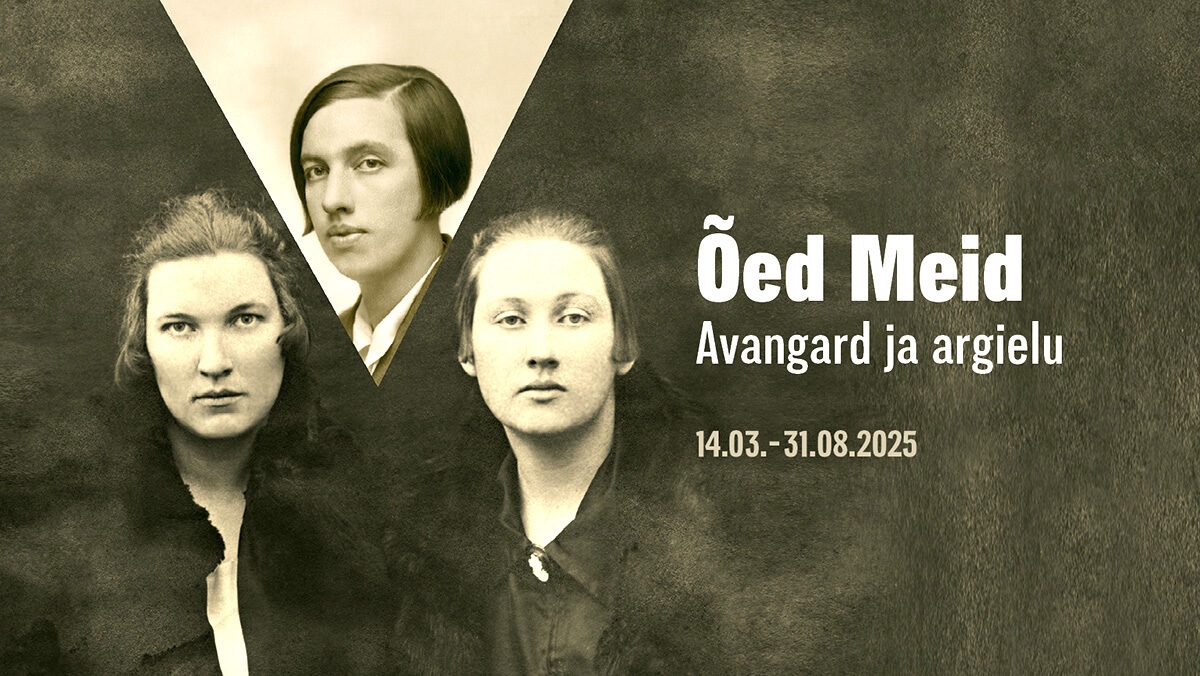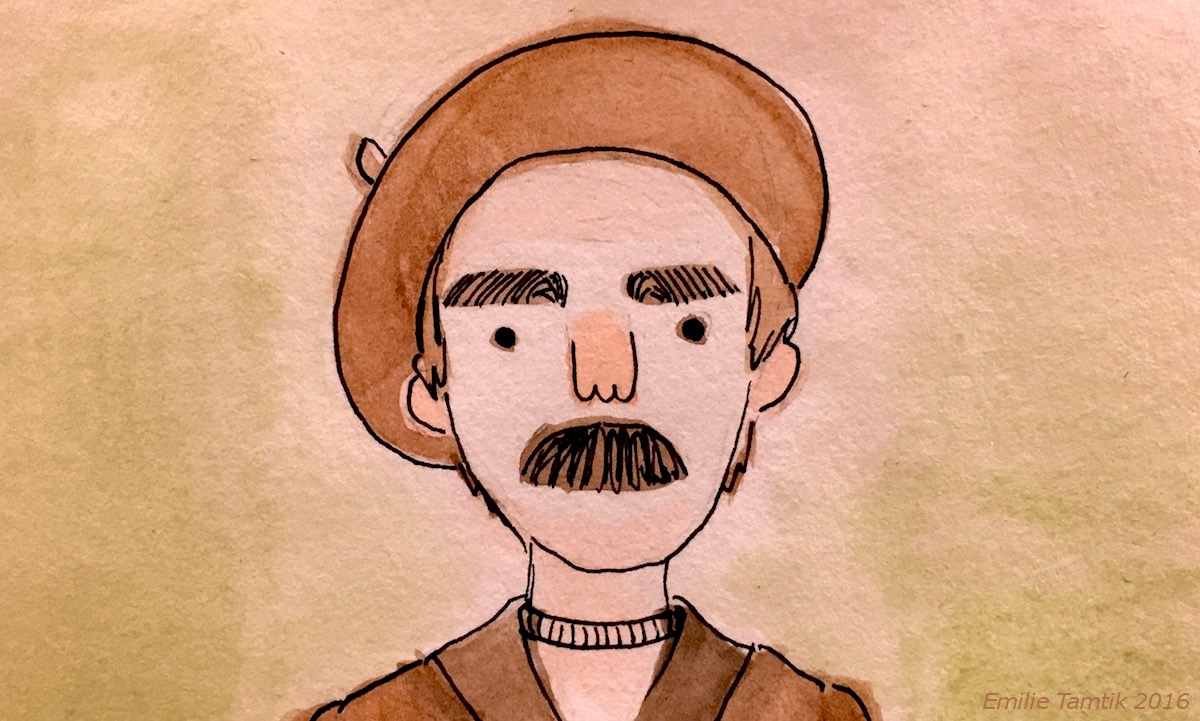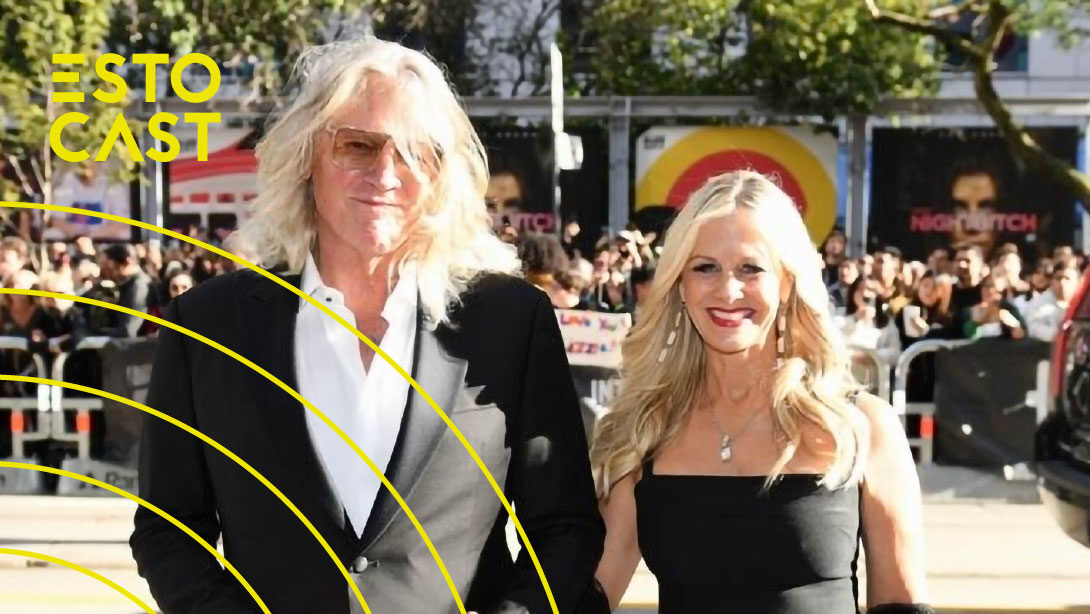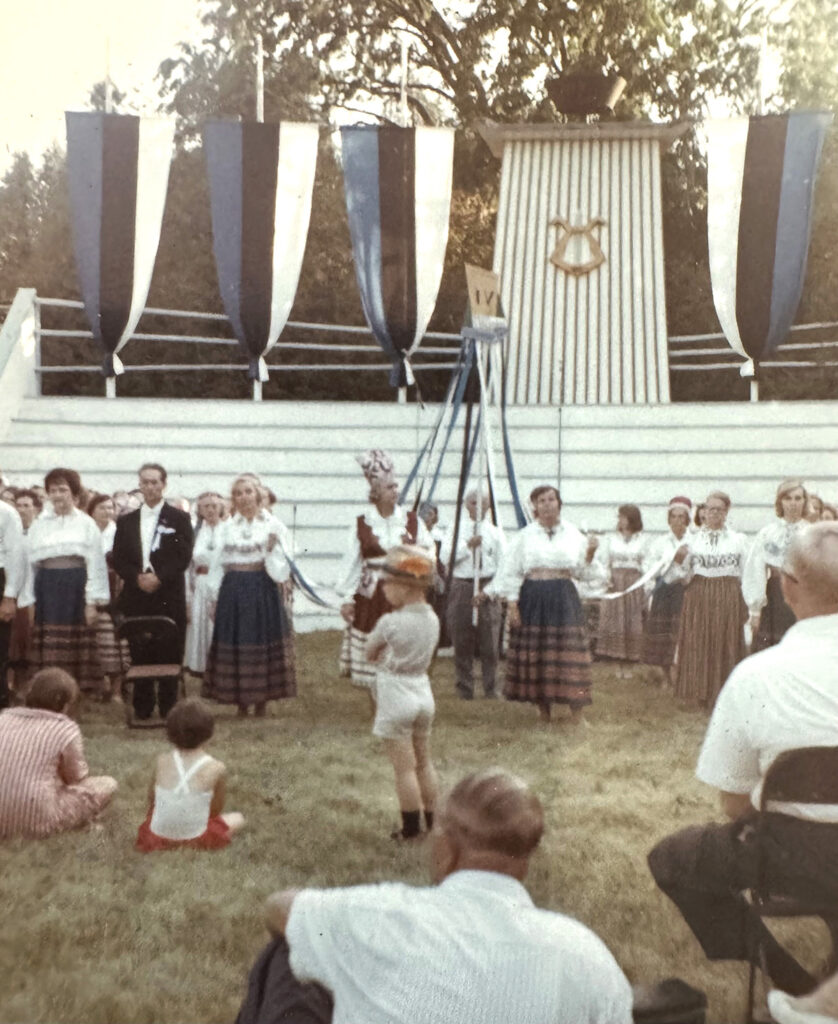
The jury wasn’t able to reach consensus on any of the names submitted and set out to come up with their own ideas. They decided that the name should reflect how the place is in its surroundings. Standing by the (first) main hall as it was being built and looking towards the river, it was noticed that the valley below was dominated by cedar trees circling the song festival grounds that were being prepared. The name Seedrioru, or Cedar Valley, came to be used as of June 1956. A truly appropriate name.
The song festival was a huge success and the first summer camp was held for 7 weeks for 75 children.
Thanks to the enormous efforts of volunteers that first spring, the first main hall with kitchen (söögisaal) was completed, a 6 level, 46 foot long wood singers’ stage (laululava) was erected, electrical lines installed, water lines from the pumphouse completed, WC facilities erected and more was accomplished, all in time for Seedrioru’s first song festival (Laulupäev) on June 30th, 1956.
The song festival was a huge success and the first summer camp was held for 7 weeks for 75 children. What an achievement, especially considering that preparations were all done mostly on weekends, after working full-time jobs in the city, by volunteers.
The first camp sleeping cabin, Orutare, was completed in 1957, the next one, Koldetare, in 1959 and the third and final one, (Arnold) Pau Tare, in 1967. The open-air theatre (Vabaõhuteater) was also completed in 1957. The 200 foot long pool was completed and ready for camp use by the summer of 1963. That year the sauna, flanked by changerooms, was built, with finishing touches completed in the spring of 1964. It was named the Järvetare.
In 1964, on the morning of April 5th, a devastating tragedy occurred: the main hall was destroyed in a fire. Some sort of explosion in the oven ignited nearby curtains. The wooden structure was swiftly engulfed in flames. The Elora Fire Dept. responded but it was too late. It boggles the mind that on the very same day, a decision was made to build a new, larger hall which was completed and ready for use a mere 90 days later on July 4th, 1964 and stands to this very day. Again, the details of this mind-blowing achievement is worthy of a separate article.
The building of Pautare in 1967 was one of two major projects that year, the other one being the creation of the sports field (spordiväljak). The land was leveled and a running track, long-jump, high-jump and pole-vault pits and volleyball courts were created, all ready for use by the campers that summer already.
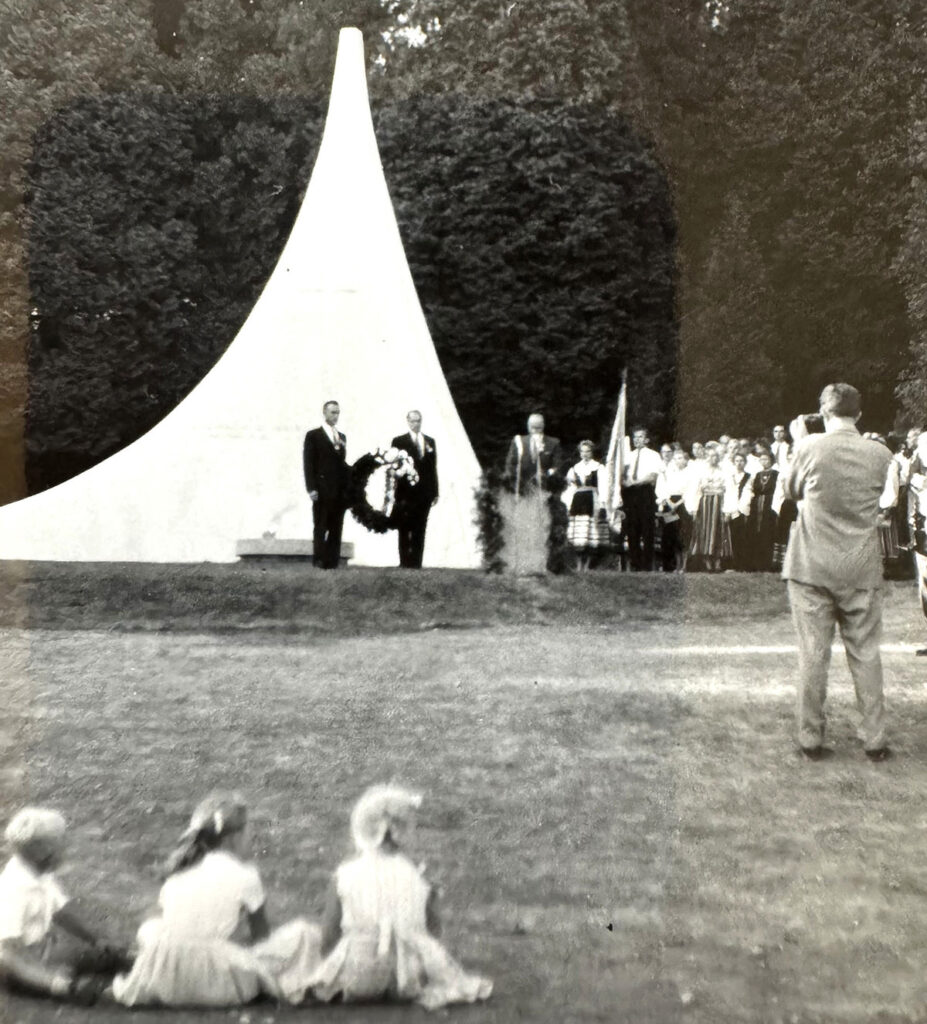
1968 saw the pouring of cement posts to support benches for the audience at the open-air theatre. The target-shooting range was built in 1969 and named, somewhat whimsically, the Paugutare (the shots cabin). Many of us know it simply as the lasketiir (shooting range). The final major early new build was the basketball court in 1971.
By 1974, a much-loved but no longer actively used structure, the singers’ stage (laululava) was weakened and becoming unsound. The sad but practical decision was made to tear it down that fall. An idea was proposed and accepted. A grassy mound was to be created, evoking the height of the original stage. Due to unfavourable weather interruptions, the mound wasn’t finished until the spring of 1975, in time for Seedrioru’s 20th anniversary. The mound was further crowned with 5 flagpoles where long vertical Estonian flags are hung for special occasions.
What matters is that our forebears, who made such sacrifices for their country and in their search for a safe haven here in Canada, are honoured.
Of course major builds, while a very significant part of its history, are only one part of how the Seedrioru we know today came to be. Roads had to be built and maintained, the grounds are in constant need of attention, painting, cleaning and maintenance is never-ending. These things were, and continue to be, done by the legions of volunteers who have donated their labour, know-how, resources and time. Their contributions have been immense. At the same time, the talgud concept, getting together to work hard, go to sauna together afterwards and enjoy social time after a long day’s work, all for a common goal, is strangely exhilarating. I imagine it was even more significant for that early generation, freshly arrived in a new, strange country.
One final major build, even though it was already completed in 1959, I have saved for last. It has become one of the iconic symbols of Seedrioru and photographed by all visitors. It had a surprisingly contentious and controversial start, the reasons for which seem inconsequential now. It is the beautiful, sail-shaped memorial, known simply as the ausammas. How could such a thing be controversial, one might ask. A significant amount of print is dedicated to this in the 25th anniversary book. It is there for those who choose to pursue the story. I have decided not to repeat those details in this article, as they really don’t matter to the young camp kids today. What matters is that our forebears, who made such sacrifices for their country and in their search for a safe haven here in Canada, are honoured. When asked about the symbolic elements, the designer Vello Hubel stated the following. The cross symbolizes faith and the sacred mourning that unites us. The flame (lit on special occasions) is light, purification and eternal life. The sail symbolizes the primordial force that propels to great heights and distances. So very fitting.
This concludes my brief summary of the time of intense building in the first 25 years since the purchase of Seedrioru. I will endeavour to cover the next 50 years in part two of this article in the weeks to come. The cultural side of life at Seedrioru will also be covered, from song festivals to theatrical productions, to concerts and more. Stay tuned.
